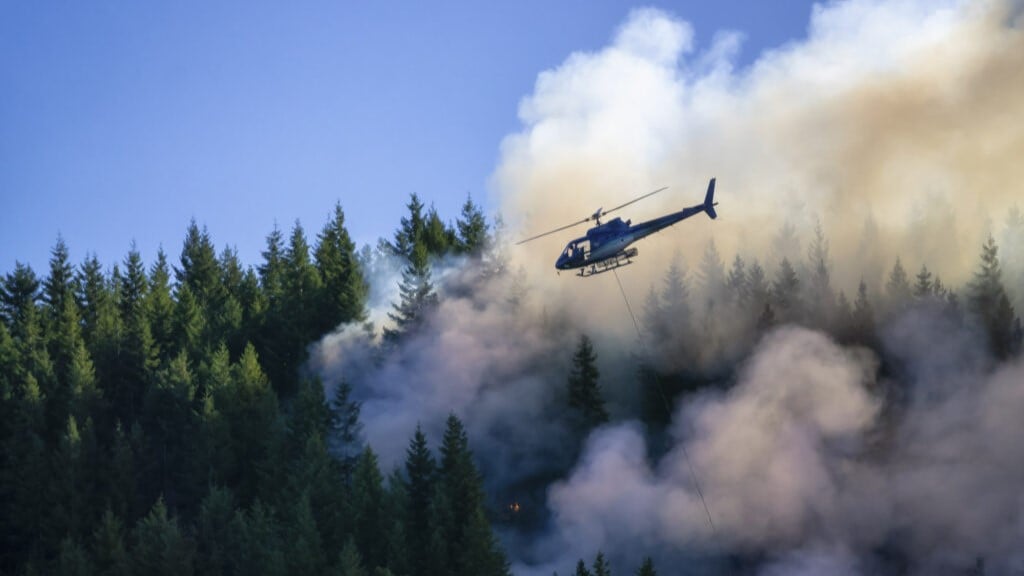
In today’s world, where the unexpected seems to happen more frequently, the ability to anticipate crises is becoming increasingly important. Natural disasters, public health emergencies, and humanitarian crises are occurring more often, with the cost of managing these events on the rise. According to the United Nations Office for Disaster Risk Reduction, global damages from natural disasters reached a staggering $250 billion in 2023, with climate-related events like wildfires and floods playing a significant role.
As Forbes outlined in their recent article, predictive analytics has become a powerful tool, transforming how governments and industries manage crises.
1. Predictive Analytics in Wildfire Control
With wildfires becoming more severe due to climate change, accurate prediction tools are increasingly essential. A recent project developed a predictive model that uses real-time data to forecast how wildfires spread. By integrating data from sources like Google, the U.S. Geological Survey (USGS), and the National Interagency Fire Center (NIFS), the model uses machine learning to generate detailed maps that predict fire movement.
These fire perimeter maps allow public safety officials to allocate resources more effectively, plan evacuations, and protect communities. The model also forecasts smoke dispersion, enabling regions far from the fire’s origin to prepare for potential air quality issues. This approach demonstrates how predictive analytics can shift crisis response from reactive to proactive.
2. Data: The Foundation of Predictive Analytics
The power of predictive analytics lies in the quality and availability of data. In the wildfire project, data from public sources and geospatial systems were compiled to create accurate fire spread predictions. In crisis management, real-time data is essential, as outdated or incomplete information can lead to poor decisions.
As technology evolves, more advanced data sources—such as drone footage, satellite imagery, and IoT sensors—are becoming available. These additional datasets enable predictive models to become more accurate and reliable, further enhancing their effectiveness in managing crises.
3. Beyond Wildfires: Expanding the Role of Predictive Analytics
While wildfire control is a powerful example, predictive analytics is also transforming how we manage other crises:
- Flood Management: Predictive models use historical rainfall, river levels, and geographic data to forecast potential floods. This allows officials to issue timely evacuation orders, allocate resources more efficiently, and reinforce infrastructure before disaster strikes.
- Humanitarian Aid: Predictive analytics helps forecast food shortages, population displacement, and resource scarcity. For example, in 2020, the World Food Programme used predictive models to pre-position supplies in vulnerable areas, saving lives and reducing costs.
- Public Health: During the COVID-19 pandemic, predictive analytics helped governments track the spread of the virus, allocate medical resources like hospital beds and ventilators, and optimize vaccine distribution. As public health challenges evolve, predictive models will continue to play a vital role in managing these crises.
4. Challenges and the Future of Predictive Analytics in Crisis Management
While predictive analytics holds immense potential, there are challenges to overcome. One of the main concerns is ensuring that the data used in predictive models is free from bias. In crisis management, decisions often directly affect vulnerable populations, making fairness and accuracy in predictions crucial. Addressing bias in AI and ensuring diverse datasets are used will be essential moving forward.
Another challenge is accessibility. While large organizations and governments have the resources to implement advanced predictive analytics solutions, smaller entities often lack the necessary tools and expertise. Developing scalable, affordable solutions will be key to making predictive analytics accessible to all.
Despite these challenges, the future of predictive analytics in crisis management is promising. As machine learning and AI technologies continue to improve, predictive models will become even more accurate, helping decision-makers respond to increasingly complex challenges.
Conclusion
Predictive analytics is revolutionizing the way crises are managed, offering governments, businesses, and organizations the ability to anticipate risks and respond proactively. By turning vast datasets into actionable insights, predictive models enable smarter, data-driven decisions that save lives and reduce recovery costs.
As technology continues to advance, predictive analytics will play an even greater role in building a more resilient future. For organizations looking to stay ahead of the unpredictable, embracing predictive analytics is no longer a choice—it’s a necessity.
To learn more about how Bronson Consulting can help your organization leverage predictive analytics for crisis management and beyond, contact us today.





